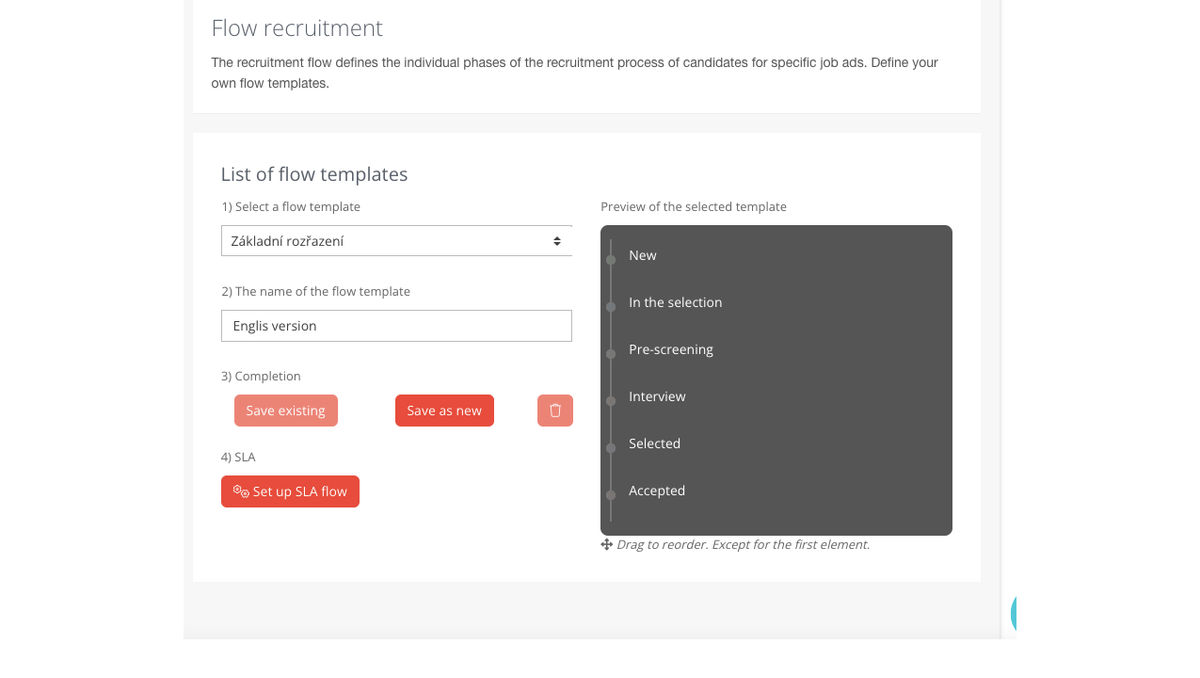Definition of flow recruitment
The recruitment flow defines the individual stages of the recruitment process so that the recruitment itself meets your needs as best as possible and reflects the recruitment process as accurately as possible.
You can create your own recruitment flow by clicking on the create a new template button, or you can create a new template by editing an existing template and using the "Save as new" option.
For each new phase, you can choose the action to trigger - for example, the "interview" action schedules a meeting date in the calendar and sends an interview invitation, or the "questionnaire" action offers you to send a pre-prepared questionnaire to the candidate if you move the candidate to the given state. Connection to a specific category of email templates also applies to other types of actions. The "Empty Action" action, on the other hand, is not connected to any templates and does not trigger any action.
View the link for managing flow recruitments.
What is good to know & our tips
Flow náboru je také důležitým "filtrem" pro statistiky - je proto dobré mít pro pozice stejného typu (např. IT pozice) jedno flow a pro pozice jiného typu (např. back-office) jiné flow. Pro statistiky typu "time to hire" nebo kvalitu zdrojů kandidátů budete mít pak relevantní data spojená přes dané flow náboru oproti situaci, kdy je vše na jedné hromadě.
If you need to remove a phase in the future, keep in mind that there must be no active or rejected candidates in that particular phase.
By changing or editing a recruitment process that is already in an advanced phase, you may also lose some data (e.g. you turn a 2-round interview into a 1-round one) and you will also distort the statistics for candidates who were further along in the recruitment process. It is therefore a good idea to think through such a change properly, or to open a new position with a new process and thus process future candidates.
You can find a more detailed description of flow recruitment settings at this link.
